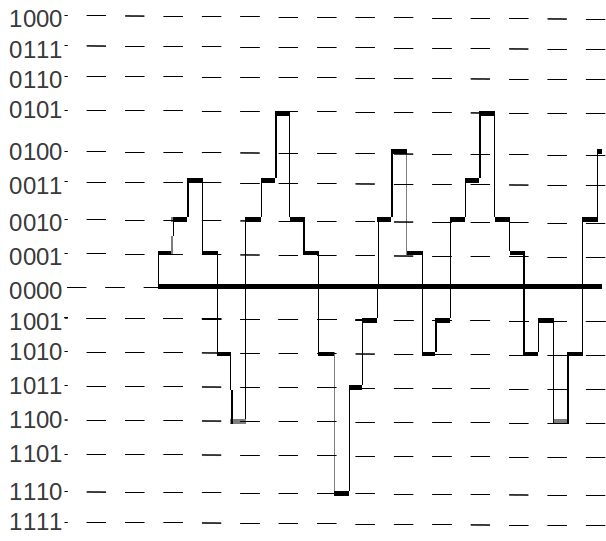Most communication today is digital. If we are talking over the phone, watching TV, using the internet or listening to music, little 0's and 1's are changed into 0's and 1's so that they can be transmitted by computer and cable and back so that we can watch, listen and understand them. Digital transmission has the advantage that errors can be easily detected and corrected.
Some method of changing analogue into digital signals is needed. A signal is 'sampled' or measured many times a second and the amplitude of the signal is recorded. This amplitude is translated into digital code as a sequence of 0's and 1's.

The reconstructed signal is then changed into binary code according to amplitude as shown in the expanded diagram of the reconstructed signal shown below.

